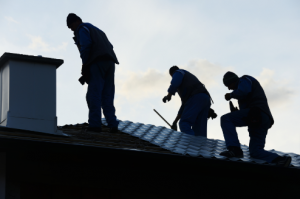Roofing Terms Explained by a Professional Roofer
This guide explains different parts of a roof in an easy-to-understand way, according to a roofer. The slanted part of the roof is a slope, and you can measure its steepness in pitch. The horizontal edge where the roof meets the wall is the eave.
On the other hand, the sloped edge is the rake. The triangle formed by two meeting slopes is a gable.
Shingles are the most common roofing material. They are small, flat pieces that overlap to cover the roof. They come in different materials, such as asphalt, wood, and metal. Asphalt shingles are the most popular because they are affordable and durable. Flashing is a thin material, usually metal, that a roofer uses to direct water away from critical areas like chimneys, vents, and skylights. It helps prevent leaks by sealing joints and edges.
Underlayment is a protective layer between the roof deck and the shingles. It adds an extra barrier against water. This part usually comes in felt or synthetic materials. Meanwhile, the roof deck is the base layer of the roof. Shingles attach to its surface. You’ll find plywood or OSB (oriented strand board) roof decks. A strong roof deck is essential for a sturdy roof.
Gutters are channels running along the edges of the roof. They direct it away from the building. This function prevents water damage to the roof, walls, and foundation. Downspouts are part of the gutter system, guiding the water from the gutters to the ground. The ridge is the roof’s highest point, where two sloping sides meet.
.










